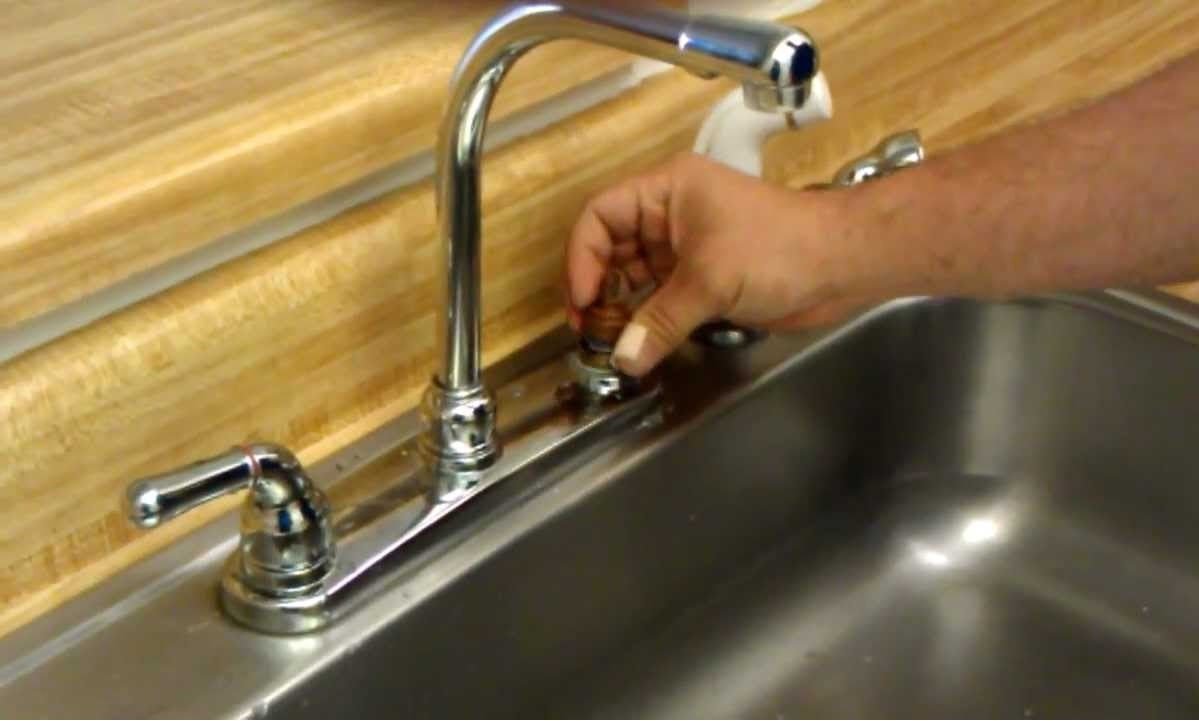Ever found yourself staring at a leaky, outdated faucet, wondering if you could tackle the job of replacing it? You're not alone. The task of figuring out how to replace a kitchen faucet might seem daunting at first glance. But here's some good news – it's far from impossible. In fact, with the right tools and a bit of patience, you can give your sink a facelift without calling in the pros.
Why bother? Well, besides stopping that annoying drip-drip noise, updating your kitchen faucet can transform the whole feel of your space. It’s one piece of hardware that packs a punch style-wise and functionally speaking.
Preparing for Your Kitchen Faucet Replacement

So you've decided to take the plunge and replace that old, leaky kitchen faucet. Congrats. Swapping out your old sink or adding a new faucet can change the game in both looks and how you use your kitchen. Now, before you dive into taking things apart and unplugging stuff, let's go through a couple of crucial steps to make sure your installation goes off without a hitch. Believe me, putting in a bit of effort upfront can really save you from a lot of stress and trouble later.
Identifying Your Faucet Type and Gathering Tools

First things first, take a good look at your current faucet setup. Is it a single-handle or double-handle? Does it have a separate sprayer? Knowing your faucet type will help you choose the right replacement and gather the necessary tools. Speaking of tools, here's what you'll need for a typical faucet replacement:
- Adjustable wrench
- Basin wrench (for those hard-to-reach nuts)
- Plumber's putty or silicone caulk
- Teflon tape
- Flashlight (Because under-sink lighting is never great)
Don't worry if you're not an experienced DIYer - with the right tools and a little patience, replacing a kitchen faucet is a relatively easy project. In fact, according to a survey by the National Association of Realtors, 73% of homeowners feel confident tackling home repairs themselves. Before you start any plumbing project, it's crucial to shut off the water supply to avoid any unexpected (and potentially disastrous) leaks or floods. Locate the shut-off valves under your sink - there should be one for hot water and one for cold. Turn them clockwise until they're fully closed. If you have an older home, the valves might be a bit stubborn, so use some elbow grease or a valve wrench if needed. Once the valves are off, turn on your faucet to release any remaining water in the lines and double-check that the water is completely shut off. You don't want any surprises when you start disconnecting supply lines.
Removing the Old Faucet
Now comes the fun part - getting rid of that old, outdated faucet. Start by disconnecting the water supply lines from the shut-off valves using your adjustable wrench. Have a bucket or towel handy to catch any residual water. Next, tackle the mounting nuts that secure the faucet to the sink. These can be a bit tricky to reach, which is where that basin wrench comes in handy. Loosen the nuts and lift the faucet base off the sink. If your old faucet has a separate sprayer, you'll need to disconnect it from the faucet body as well. Some sprayers are held in place with a nut, while others simply snap off. With the old faucet removed, take a moment to clean up the sink area and remove any old putty or gunk. A clean surface will make installing the new faucet much easier.
Installing the New Kitchen Faucet

You've prepped, you've gathered your tools, and you've said goodbye to that old faucet. Now it's time for the main event - installing your shiny new kitchen faucet. Before you secure the faucet to the sink, it's a good idea to connect the water supply lines first. Trust me, it's much easier to do this when you have some wiggle room. Wrap the threaded ends of the faucet's hot and cold valves with Teflon tape to create a watertight seal. Then, screw on the supply lines and tighten with your adjustable wrench. Make sure they're nice and snug, but don't overdo it - you don't want to strip the threads.
Finalizing Installation with Additional Components
With the supply lines connected, you can now place the faucet into the holes in your sink and secure it from below with mounting nuts. If your faucet comes with a deck plate, install that first for a seamless look. If you have additional components like a sprayer or soap dispenser, now's the time to install those as well. Follow the manufacturer's instructions for proper placement and connection. Once everything is tightened down, give your new faucet a once-over to make sure it's straight and centered. You don't want a crooked faucet ruining your kitchen's feng shui. You've double-checked your connections and everything looks good - but the real test is turning the water back on. Slowly turn the shut-off valves counterclockwise to open them up. Keep an eye out for any leaks or drips as the water pressure builds. If you spot any leaks, don't panic. Turn the water off again and check that all connections are properly tightened. A little extra Teflon tape or a quarter-turn with a wrench can often do the trick. Once you've confirmed there are no leaks, let the water run for a minute or two to flush out any debris in the lines. Then, give yourself a pat on the back - you've successfully installed a new kitchen faucet.
Cleaning Up Post-Installation
You're almost done. Before you sit back and admire your handiwork, take a few minutes to clean up your work area. Wipe down the sink and faucet to remove any fingerprints or residue from the installation process. Put away your tools and dispose of any old faucet parts or packaging. If you have any leftover Teflon tape or plumber's putty, store them in a labeled bag or container for future plumbing projects. Trust me, they'll come in handy someday.
Troubleshooting Common Installation Issues

Even with careful preparation and installation, issues can sometimes arise. Here are a couple of common problems and how to troubleshoot them: If you're having trouble reaching the mounting nuts with a regular basin wrench, try using a telescoping basin wrench or a basin wrench with a swiveling head. These can help you get into those tight spaces and awkward angles. For really stubborn nuts, apply a little penetrating oil and let it sit for a few minutes before trying again. A little lubrication can go a long way.
Managing Water Spots on Faucet Finish
If you notice water spots or mineral buildup on your new faucet, don't worry - it's a common issue, especially in areas with hard water. To prevent water spots, wipe down the faucet after each use with a soft, dry cloth. For tougher buildup, use a mixture of equal parts white vinegar and water and scrub gently with a non-abrasive sponge. Avoid using harsh cleaners or abrasive pads, as these can scratch or dull the finish of your faucet over time.
Maximizing Your Kitchen Sink's Functionality

With your new faucet installed and looking great, why not take it a step further and maximize your sink's functionality? If your sink has extra holes that aren't being used by your faucet, consider adding some useful accessories like a soap dispenser, instant hot water tap, or filtered water dispenser. Sprucing up your sink with these handy gadgets can turn it into a daily convenience powerhouse. Plus, they'll give your sink a custom, high-end look.
Configuring Your Sink for Optimal Use
Think about how you use your sink daily and arrange your faucet and accessories accordingly. For example, if you're right-handed, you might want your soap dispenser on the right side for easy access. If you have a wide sink, consider installing your faucet slightly off-center to allow more room for washing large pots and pans. Putting your sink in just the right spot can amp up how well it works for you.
Conclusion
You've now journeyed through the ins and outs of replacing that old tap - quite straightforward when broken down into steps! From turning off water lines to attaching new supply lines snugly under your sink cabinet - who knew plumbing could almost feel like play?
And there we have it; armed with knowledge and maybe slightly dirtier hands than before (but hey, what are soap dispensers for?), you’ve stepped up as master commander over drips and drops in your domain. Remember this day as proof positive – learning how to replace kitchen faucets isn’t just about fixing things; it’s an act of adding both beauty and value where we least expect them.

